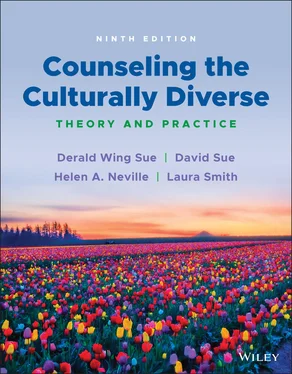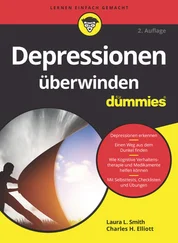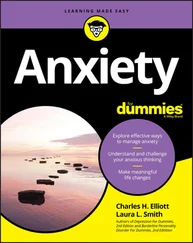bThemes and examples are taken from Keller and Galgay (2010).
cThemes and examples are taken from Nadal, Issa, et al. (2010).
THE DYNAMICS AND DILEMMAS OF MICROAGGRESSIONS
The study of microaggressions presents “a complex scientific challenge because it deals with both explicit and implicit bias; explores the lived realities of marginalized groups in our society; frames microaggressive dynamics as an interaction between perpetrator, target, and the external environment; pushes powerful emotional buttons in the actors; and is difficult to separate from the sociopolitical dimensions of oppression, power, and privilege” (Sue, 2017, p. 171). Not only does the subtle and insidious nature of racial microaggressions render them outside the level of awareness of their perpetrators, but recipients also find their ambiguity difficult to handle. Victims are placed in an unenviable position of questioning not only the perpetrators, but themselves as well (e.g., “Did I misread what happened?”). Victims often replay an incident over and over again to try to understand its meaning.
Yet, despite attribution ambiguity, microaggressions significantly shape experiences and environments. Researchers have consistently identified microaggressions as creating a hostile and invalidating campus climate (Yosso, Smith, Ceja, & Solorzano, 2009; Young & Anderson, 2019), even referring to them as “toxic rain” that corrodes the educational experience of students of color (Suarez‐Orozco et al., 2015).” The cumulative effect of microaggressions has been shown to impede learning by depleting cognitive and psychological resources (Smith, Hung, & Franklin, 2011; Watkins, Labarrie, & Appio, 2010), resulting in a phenomenon labeled “racial battle fatigue” (Martin, 2019). In work that looks extensively at Black males’ experiences at PWIs, Harper (2013, p. 189) refers to this same concept as “onlyness,” defined as the “psychoemotional burden of having to strategically navigate a racially politicized space occupied by few peers, role models, and guardians from one's same racial or ethnic group.”
Microaggressions subject marginalized group members to four major social psychological dilemmas that serve to deplete their psychic energies and create constant stress in their lives (Sue & Spanierman, 2020). Let us use the examples of Jaylen and Melanie to illustrate these challenges.
DILEMMA 1: THE CLASH OF SOCIODEMOGRAPHIC REALITIES
For Jaylen and Melanie, a major question confronting them was whether they were perceiving their situations accurately or realistically. Were racism and sexism operating in their respective encounters with others? Were people assuming that Jaylen was not to be trusted, up to no good, or potentially a threat? Was Melanie correct that actions of her male colleagues excluded and rendered her invisible, and that she was seen as less competent and capable because of her gender? Although lived experience told both they perceived the situation accurately, chances are that others would be offended at these suggestions. They would likely deny possessing biases, stereotypes, and acting in ways that were exclusionary. In other words, they would emphasize that they and their organizations do not discriminate on the basis of color, sex, sexual orientation, or creed. The question becomes: Whose reality is the true reality?
Oftentimes, the perceptions held by the dominant group differ significantly from those of marginalized groups in our society. As we have seen earlier, overt displays of racism, sexism and heterosexism appear to have made a comeback and increased in the past few years (Sue, Calle, Mendez, Alsaidi, & Glaeser, 2021), But, many White Americans continue to hold onto the belief that racism is no longer prevalent in society, and not important in the lives of people of color. Further, many men (and women) think that both sexes have achieved nearly equal status in society. Most importantly, most well‐intentioned individuals in our nation and certainly those in power positions do not consider themselves capable of discrimination based on race, gender, or sexual orientation because they are free of bias.
On the other hand, People of Color perceive White Americans to be racially insensitive, to enjoy holding power over others, and to think that they are superior (Sue, Capodilupo, et al., 2007). LGBTQ individuals consider homonegativity and antigay harassment to be a crucial aspect of their everyday existence (Burn et al., 2005; Nadal, 2013). Women contend that sexism is alive and well in social and professional settings. Although research supports the idea that those who are most disempowered are more likely to have an accurate perception of reality, it is the groups in power that have the ability to define reality. Thus, People of Color, women, and LGBTQ individuals are likely to experience their perceptions and interpretations being negated or dismissed. This becomes particularly salient in the therapeutic encounter, which represents an unequal power dynamic. The clash of racial and gender realities represent a major dilemma for Jaylen and Melanie because their realities are likely to be dismissed as inaccurate, or pathologized, and the realities of society or even the therapist is imposed upon them.
DILEMMA 2: THE INVISIBILITY OF UNINTENTIONAL EXPRESSIONS OF BIAS
How could Jaylen or Melanie “prove” that people or colleagues engaged in microaggressions against them? When Jaylen observes that the seat not taken on a crowded bus is always next to him, and when Melanie feels unwelcomed by portraits of only male Presidents of the University, they are met with disbelief and invalidations of their interpretations. These incidents are easily explained away and disregarded by others with alternative explanations. In the case of Jaylen, many might observe that there was probably other empty seats on the bus, that many passengers preferred to stand, and that he is misreading the situation; in the case of Melanie, she would be told that the university had male portraits because it was an accurate reflection of the history of the university, and it was not meant to make her feel excluded.
As we indicated earlier, microaggressions are oftentimes reflections of implicit bias, the racial and gender attitudes and beliefs that lie outside the level of conscious awareness. Because most people are well intentioned and experience themselves as good, moral and decent human beings, they find it difficult to entertain the notion that they have behaved in a racist or sexist manner (Sue, 2015). That the microaggression is essentially invisible to the perpetrator creates a psychological dilemma for the victim that can leave them feeling frustrated, powerless, and even questioning their own sanity (Bostwick & Hequembourg, 2014; Harper, 2013; Sue, Capodilupo, & Holder, 2008; Watkins et al., 2010). Helping professionals who are unable to understand the potent impact of microaggressions in the lived experience of marginalized groups, may unintentionally commit microaggressions toward them by dismissing, negating or diluting the harmful impact they pose on culturally diverse clients.
DILEMMA 3: THE PERCEIVED MINIMAL HARM OF MICROAGGRESSIONS
Oftentimes, when perpetrators are confronted about microaggressions, they accuse the victim of overreacting or being hypersensitive or touchy. Because the microaggressions are often invisible to perpetrators, they cannot understand how the events could cause any significant harm to the victims. Trivializing the impact of racial microaggressions can be an automatic, defensive reaction on the part of some White people, to avoid feeling blamed and guilty (Sue, Capodilupo, Nadal, & Torino, 2008). Despite a lack of acknowledgement by majority groups that everyday experiences of discrimination can be harmful to minorities, research is mounting to suggest otherwise: a large‐scale meta‐analysis reveals that perceived discrimination has cumulative and harmful effects on psychological well‐being (Schmitt, Branscombe, Postmes, & Garcia, 2014), and an American Psychological Association (2016) survey of over 3,000 respondents found that daily experiences of discrimination were significantly associated with poor physical health and high stress levels. Further, recent work links microaggressions to post‐trauma symptoms and depression (Auguste, Cruise, & Jimenez, 2021; Bryant‐Davis, 2018).
Читать дальше












